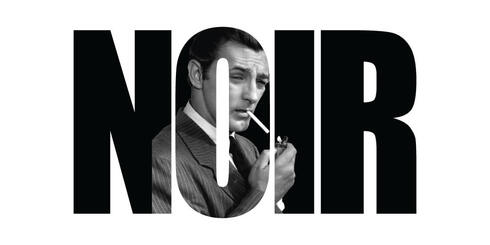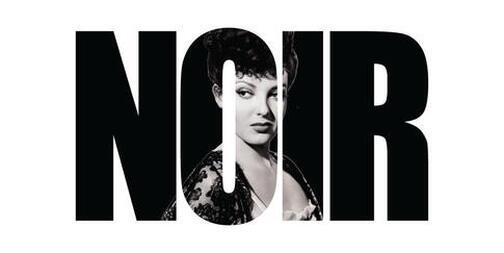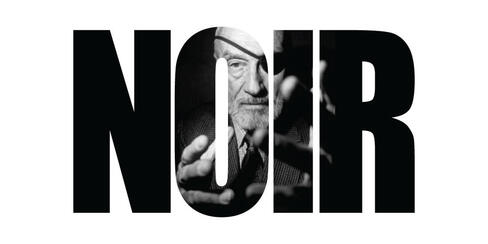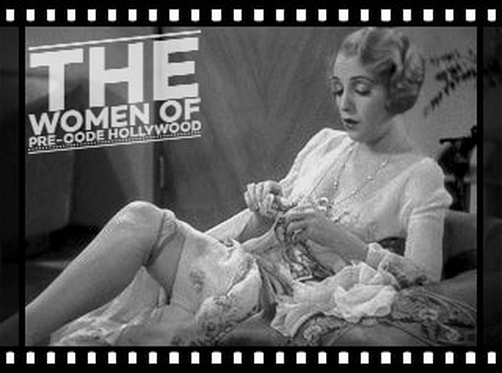VERONICA LAKE
AND FILM NOIR
Veronica Lake made significant contributions to the genre of film noir, particularly during the 1940s. Her combination of beauty, mystery, and a seductive allure made her an ideal fit for the femme fatale archetype that was prevalent in many film noir productions. Here are some of Lake's notable contributions to the genre:
"This Gun for Hire" (1942): In this film, Lake starred opposite Alan Ladd, and their on-screen chemistry became iconic. Lake portrayed a nightclub singer named Ellen Graham, who becomes entangled in a web of intrigue and murder. Her character embodies the classic femme fatale, captivating both the audience and the film's protagonist.
"The Glass Key" (1942): Lake reunited with Alan Ladd in this adaptation of Dashiell Hammett's novel. She played the role of Janet Henry, a woman caught between two powerful men in a tale of corruption and political manipulation. Lake's character adds depth and complexity to the story, showcasing her ability to portray both vulnerability and cunning.
"I Married a Witch" (1942): While not a traditional film noir, this romantic comedy has noir elements and showcases Lake's versatility as an actress. She played a mischievous witch who is accidentally released from a centuries-old curse and sets out to make the life of the man who thwarted her ancestor's plans miserable. Lake's character exudes a playful yet mysterious charm, adding a touch of intrigue to the film.
"The Blue Dahlia" (1946): Lake reunited with her frequent co-star Alan Ladd in this film, which is often cited as a classic example of film noir. She portrayed Joyce Harwood, a seductive and enigmatic femme fatale involved in a murder case. Lake's performance adds depth and ambiguity to her character, leaving the audience guessing about her true intentions until the end.
Lake's contributions to film noir were not only limited to her performances but also extended to her visual impact. Her iconic hairstyle, the "peek-a-boo" or "Veronica Lake" look, became synonymous with the glamour and allure of the femme fatale in film noir.
Veronica Lake's performances in these films and her embodiment of the femme fatale archetype have made her an enduring figure in the history of film noir. Her contributions helped define the genre and continue to captivate audiences today.
"This Gun for Hire" (1942): In this film, Lake starred opposite Alan Ladd, and their on-screen chemistry became iconic. Lake portrayed a nightclub singer named Ellen Graham, who becomes entangled in a web of intrigue and murder. Her character embodies the classic femme fatale, captivating both the audience and the film's protagonist.
"The Glass Key" (1942): Lake reunited with Alan Ladd in this adaptation of Dashiell Hammett's novel. She played the role of Janet Henry, a woman caught between two powerful men in a tale of corruption and political manipulation. Lake's character adds depth and complexity to the story, showcasing her ability to portray both vulnerability and cunning.
"I Married a Witch" (1942): While not a traditional film noir, this romantic comedy has noir elements and showcases Lake's versatility as an actress. She played a mischievous witch who is accidentally released from a centuries-old curse and sets out to make the life of the man who thwarted her ancestor's plans miserable. Lake's character exudes a playful yet mysterious charm, adding a touch of intrigue to the film.
"The Blue Dahlia" (1946): Lake reunited with her frequent co-star Alan Ladd in this film, which is often cited as a classic example of film noir. She portrayed Joyce Harwood, a seductive and enigmatic femme fatale involved in a murder case. Lake's performance adds depth and ambiguity to her character, leaving the audience guessing about her true intentions until the end.
Lake's contributions to film noir were not only limited to her performances but also extended to her visual impact. Her iconic hairstyle, the "peek-a-boo" or "Veronica Lake" look, became synonymous with the glamour and allure of the femme fatale in film noir.
Veronica Lake's performances in these films and her embodiment of the femme fatale archetype have made her an enduring figure in the history of film noir. Her contributions helped define the genre and continue to captivate audiences today.
VIDEO TRIBUTE
Veronica Lake
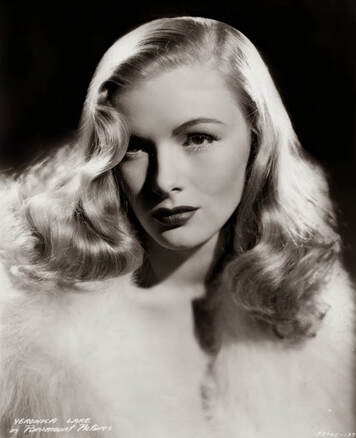
Veronica Lake, born Constance Frances Marie Ockelman on November 14, 1922, was an American film actress and icon of the 1940s. Known for her signature "peek-a-boo" hairstyle, which featured a deep side part that partially covered one eye, Lake captivated audiences with her smoky voice, sultry beauty, and magnetic on-screen presence.
Lake was born in Brooklyn, New York, and showed an early interest in acting. She studied at the Bliss-Hayden School of Acting and began her career in small roles on Broadway before transitioning to Hollywood.
In 1941, Lake signed a contract with Paramount Pictures, and her breakthrough came with the film "I Wanted Wings" (1941). She quickly became one of Hollywood's most popular and highest-paid actresses, starring in a series of successful films. Some of her notable movies include "Sullivan's Travels" (1941), "This Gun for Hire" (1942), "The Glass Key" (1942), and "The Blue Dahlia" (1946).
Lake's on-screen persona was often that of a mysterious femme fatale or a seductive, glamorous woman. She had a natural talent for playing strong, independent characters with a hint of vulnerability. Her chemistry with co-star Alan Ladd in several films was particularly notable, and they became one of Hollywood's most popular screen duos.
However, despite her success, Lake faced personal challenges throughout her life. She struggled with alcoholism, turbulent relationships, and financial issues. Her career began to decline in the late 1940s, partly due to personal difficulties and changing trends in Hollywood.
Lake made a few attempts at comebacks, including a stage career and television appearances, but she was unable to regain her previous level of stardom. She eventually retired from acting in the early 1950s.
In the following years, Lake faced additional hardships, including struggles with mental health and financial instability. She worked in various jobs, including as a hotel maid and a bartender, to support herself.
Tragically, Veronica Lake's life ended prematurely. She passed away on July 7, 1973, at the age of 50, due to complications from acute hepatitis and acute renal failure. Despite the challenges she faced, Lake's unique beauty and captivating screen presence have left an indelible mark on the history of cinema, making her an enduring symbol of Hollywood's golden era.
Lake was born in Brooklyn, New York, and showed an early interest in acting. She studied at the Bliss-Hayden School of Acting and began her career in small roles on Broadway before transitioning to Hollywood.
In 1941, Lake signed a contract with Paramount Pictures, and her breakthrough came with the film "I Wanted Wings" (1941). She quickly became one of Hollywood's most popular and highest-paid actresses, starring in a series of successful films. Some of her notable movies include "Sullivan's Travels" (1941), "This Gun for Hire" (1942), "The Glass Key" (1942), and "The Blue Dahlia" (1946).
Lake's on-screen persona was often that of a mysterious femme fatale or a seductive, glamorous woman. She had a natural talent for playing strong, independent characters with a hint of vulnerability. Her chemistry with co-star Alan Ladd in several films was particularly notable, and they became one of Hollywood's most popular screen duos.
However, despite her success, Lake faced personal challenges throughout her life. She struggled with alcoholism, turbulent relationships, and financial issues. Her career began to decline in the late 1940s, partly due to personal difficulties and changing trends in Hollywood.
Lake made a few attempts at comebacks, including a stage career and television appearances, but she was unable to regain her previous level of stardom. She eventually retired from acting in the early 1950s.
In the following years, Lake faced additional hardships, including struggles with mental health and financial instability. She worked in various jobs, including as a hotel maid and a bartender, to support herself.
Tragically, Veronica Lake's life ended prematurely. She passed away on July 7, 1973, at the age of 50, due to complications from acute hepatitis and acute renal failure. Despite the challenges she faced, Lake's unique beauty and captivating screen presence have left an indelible mark on the history of cinema, making her an enduring symbol of Hollywood's golden era.
Quotes:
"You could put all the talent I had into your left eye and still not suffer from impaired vision."
"I will have one of the cleanest obits of any actress. I never did cheesecake like Ann Sheridan or Betty Grable. I just used my hair."
"I wasn't a sex symbol, I was a sex zombie."
[on Alan Ladd] "Alan Ladd was a marvelous person in his simplicity. In so many ways we were kindred spirits. We both were professionally conceived through Hollywood's search for box office and the types to insure the box office. And we were both little people. Alan wasn't as short as most people believe. It was true that in certain films Alan would climb a small platform or the girl worked in a slit trench. We had no such problems together."
"There's no doubt I was a bit of a misfit in the Hollywood of the forties. The race for glamor left me far behind. I didn't really want to keep up. I wanted my stardom without the usual trimmings. Because of this, I was branded a rebel at the very least. But I don't regret that for a minute. My appetite was my own and I simply wouldn't have it any other way."
- Veronica Lake
Trivia:
When former lover Marlon Brando read in a newspaper that a reporter had found Veronica Lake working as a cocktail waitress in a Manhattan bar, he instructed his accountant to send her a check for a thousand dollars. Out of pride, she never cashed it, but kept it framed in her Miami living room to show her friends.
She and Alan Ladd made 7 movies together: The Blue Dahlia (1946), Duffy's Tavern (1945), The Glass Key (1942), Saigon (1947), Star Spangled Rhythm (1942), This Gun for Hire (1942) and Variety Girl (1947). In Variety Girl (1947), Star Spangled Rhythm (1942) and Duffy's Tavern (1945) they appear as themselves.
Among the many reasons for her divorce from director Andre de Toth was her discovery that the reason her career largely went dormant during their marriage was not a lack of interest in her services, but the fact that de Toth, without consulting Lake, continuously turned down scripts submitted to his wife.
Despite being one of the most popular pin-ups of the World War II era, Lake personally professed to being at a loss to explain her success as a movie star, since she considered herself neither talented as an actress nor especially attractive.
She and Alan Ladd made 7 movies together: The Blue Dahlia (1946), Duffy's Tavern (1945), The Glass Key (1942), Saigon (1947), Star Spangled Rhythm (1942), This Gun for Hire (1942) and Variety Girl (1947). In Variety Girl (1947), Star Spangled Rhythm (1942) and Duffy's Tavern (1945) they appear as themselves.
Among the many reasons for her divorce from director Andre de Toth was her discovery that the reason her career largely went dormant during their marriage was not a lack of interest in her services, but the fact that de Toth, without consulting Lake, continuously turned down scripts submitted to his wife.
Despite being one of the most popular pin-ups of the World War II era, Lake personally professed to being at a loss to explain her success as a movie star, since she considered herself neither talented as an actress nor especially attractive.

